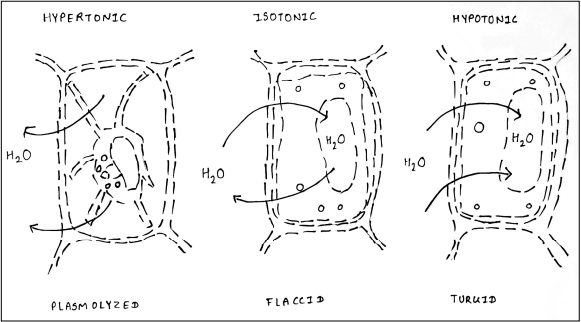Voges Proskauer (VP) test is used to differentiate between the members of Enterobacteriaceae family.
Introduction to Voges Proskauer (VP) Test:
The Voges Proskauer test is named after two microbiologists, Voges and Proskauer who were working together in 1898. The test was accidently formulated for the first time, when they observed the formation of red color in a specific media due to the addition of potassium hydroxide. The exact reason for color change was brought out by Sir Arthur Harden. He stated that the color change is due to the chemical reaction of potassium hydroxide with acetoin (acetyl methyl carbinol). The acetoin is the metabolite formed during glucose fermentation by bacteria. Maxwell M. Barritt improvised this test, by using alpha napthol. The addition of alpha napthol increased the strength of red color formation. The test received its name in the honor of Voges and Proskauer & their contribution.
All Enterobacteriaceae members utilize glucose by glycolysis pathway and produce pyruvic acid. The metabolism of pyruvic acid varies in different members of Enterobacteriaceae. And hence, the metabolic pathways and their products are used to differentiate them.

The VP test determines the presence of acetoin produced by butanedoil pathway. The synthesis of 2-3 butanediol via acetoin is used to differentiate the Enterobacteriaceae members.
Principle Voges Proskauer (VP) Test:
The Voges- Proskauer (VP) test determines whether the given bacteria produces Acetoin (acetylmethyl carbinol) or not. If an aerobic bacteria produces acetoin, it reacts with added alpha napthol in presence of strong alkali to produce diacetyl. Diacetyl further reacts with guanidine group of proteins (peptone) to form red or pinkish color product.

Requirements:
- Test organism
- Test tubes
- Pipette
- Media
- Dipeptone – 7gm/L
- Dextrose or glucose – 5 gm/L
- Potassium phosphate – 5 gm/L
- Distil water – 1 L
- Barritt’s Reagent A
- Alpha – Napthol (5%) – 50 gm
- Absolute Ethanol – 1000ml
- Barritt’s Reagent B (strong alkali)
- Potassium Hydroxide – 40 gm
- Distil water – 1000ml
Procedure for Voges Proskauer (VP) Test:
- Prepare the media as per the given composition, dispense in the test tubes, and cover their mouth with cotton plugs and autoclave.
- After autoclaving, allow the media to cool down up to 45°C
- Inoculate the test organism in sterile media
- Incubate the inoculated media in incubator for 24 hours at 37°C
- After 24 hours of incubation, add 6 drops of Barritt’s Reagent A and stir well
- Add 2 drops of Barritt’s Reagent B in the same test tubes and stir again
- Observe the red color formation.
Observation of Voges Proskauer (VP) Test:
A change in color is observed in the test tube.
Result of VP Test:
- The formation of Red color indicates that the test bacteria produces acetoin from pyruvate and follows butanediol pathway and hence it is VP+.
- No red color formation indicates that the test bacteria do not produce acetoin from pyruvate and do not follow butanediol pathway and hence it is VP-.
Conclusion of VP Test:
The VP test is useful to differentiate different members of Enterobacteriaceae family members based on their metabolic pathways.
Activity:
Following are members of Enterobacteriaceae members, either surf on Internet or perform in lab and tell us which of the following bacteria are VP + and VP-
Write ‘Yes’ or ‘No’ in the given column.
| Enterobacteriaceae members | VP+ | VP- |
| Klebsiella oxytoca | ||
| Proteus mirabilis | ||
| Salmoneall enterica | ||
| E. coli | ||
| Enterobacter cloacae | ||
| Klebsiella pneumonia |
If you liked this resource, please Like, Share, and Subscribe us for more content.


